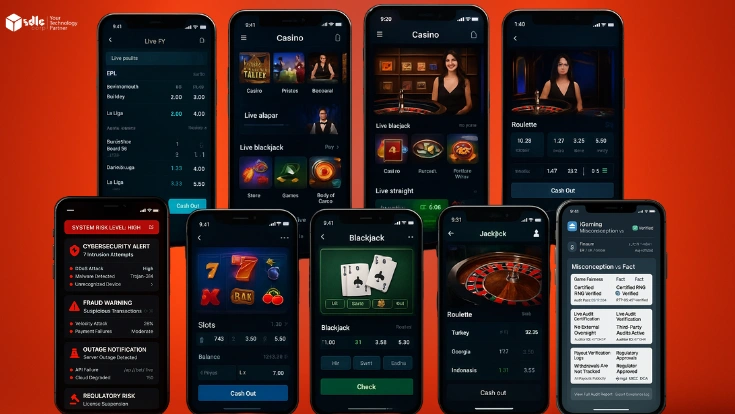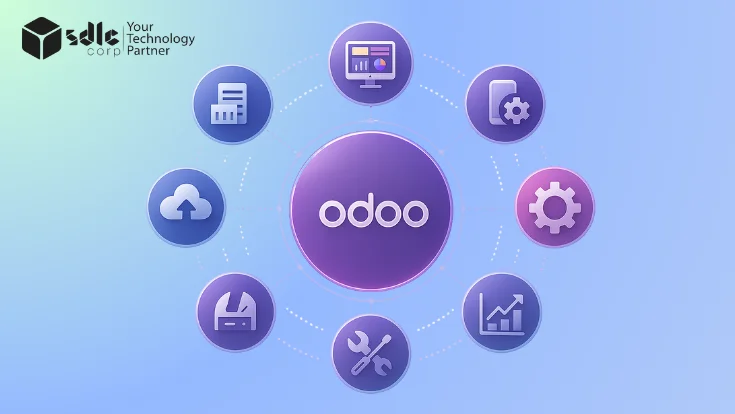Introduction
Generative AI refers to a class of artificial intelligence systems capable of generating new content or data based on learned patterns. Unlike traditional AI, which is designed to follow predefined rules, Generative AI creates original outputs, such as images, music, text, and videos, by learning from vast amounts of data. It is powered by machine learning models and deep learning algorithms, making it a powerful tool in various fields like AI content creation and AI-driven innovation.
By harnessing Generative AI, businesses can streamline content production, enhance creativity, and innovate across industries. This technology is revolutionizing the way companies approach AI technology in business.

How Does Generative AI Work?
Generative AI functions by training on large datasets and learning the underlying patterns to generate new data. The process typically includes three key stages: AI development services play a crucial role in optimizing these stages, ensuring effective model training and data generation.
1. Data Collection
Generative AI systems start by gathering vast amounts of data. The data can be images, text, sound, or video, depending on the application. For instance, to create new text, a Generative AI model would analyze large text datasets to understand language structure, syntax, and meaning.
2. Learning & Training
The AI utilizes machine learning models to identify patterns in the data. It then uses deep learning algorithms to learn how these patterns work together. This stage is crucial for the AI to understand the intricacies of the data, enabling it to generate realistic and high-quality outputs.
3. Content Generation
After training, the Generative AI model is capable of producing new content. For example, it might generate images based on certain styles or create text that mimics human writing. The AI’s creativity is directly linked to the quality and variety of the data it has been exposed to during training.
Key Applications of Generative AI
Generative AI has broad applications across various industries, especially those focused on content creation and innovation. Some of the primary uses include:
Content Creation: From generating realistic images and videos to producing high-quality written content, Generative AI has revolutionized creative industries.
Marketing: Businesses can use Generative AI to create personalized advertisements, emails, and other marketing materials.
Design and Art: AI-driven innovation allows designers to generate original artwork, music, and product designs based on parameters defined by the user.
Healthcare: Generative AI models are being used to design new drugs, synthesize medical data, and even assist in medical imaging.
Ready to unlock the power of Agentic AI and transform your business?
Benefits of Generative AI in Business
Incorporating Generative AI into business operations provides several key benefits:
1. Enhanced Creativity
With the ability to generate original content, Generative AI boosts creativity and innovation. It allows businesses to explore new ideas and solutions that may not be immediately apparent to humans, helping them stay competitive.
2. Improved Efficiency
By automating content creation, Generative AI reduces the time and effort required to produce new materials. This leads to faster turnaround times and increased productivity, which is essential for industries such as marketing, entertainment, and software development.
3. Personalization
Generative AI enables the creation of highly personalized content. For example, businesses can use Generative AI to create tailored marketing materials, providing a more customized experience for their customers and increasing engagement.
4. Cost Savings
By automating tasks that would normally require a human touch, Generative AI reduces the need for a large workforce, cutting down operational costs. For businesses focused on content creation, this can lead to significant savings in both time and money.
Features of Generative AI

To fully leverage Generative AI, it’s important to understand the features that make it stand out in the field of AI technology:
1. Autonomy
Generative AI operates autonomously, meaning it can generate content or data without requiring constant human supervision. This autonomy allows businesses to automate entire content creation workflows, from idea generation to final output.
2. Adaptability
Generative AI systems are highly adaptable. They can be trained to generate content in various formats, such as text, images, and music, based on the specific needs of the business. This makes Generative AI a flexible tool for a wide range of industries.
3. Speed & Efficiency
Generative models can produce high-quality content in a fraction of the time it would take a human. This is particularly valuable for businesses needing to generate large volumes of content quickly, such as in marketing, social media management, and customer service.
4. Learning from Data
As Generative AI learns from new data, it becomes more efficient over time, improving the quality and accuracy of the generated content. This continuous learning capability ensures that Generative AI stays up-to-date and relevant, even as industry trends evolve.
Generative AI vs. Traditional AI
While Generative AI and traditional AI systems both rely on data to function, they differ in how they operate and their capabilities. Here’s a comparison: Machine learning development plays a critical role in both, enhancing their ability to learn from data and improve performance over time.
| Aspect | Generative AI | Traditional AI |
|---|---|---|
| Purpose | Creates new data or content based on patterns learned from existing data | Performs specific tasks based on predefined rules or models |
| Focus | Content creation, creativity, and innovation | Task automation, data analysis, and decision-making |
| Learning Method | Learns from large datasets and generates new outputs | Follows rule-based logic or specific algorithms |
| Use Cases | AI content creation, art generation, personalized marketing | Data analysis, process optimization, decision-making |
| Benefits | Enhances creativity, enables high personalization | Improves operational efficiency and decision-making |
While Generative AI excels at creating new content, traditional AI is best suited for tasks that require data analysis and decision-making, such as in business automation or financial predictions.
Conclusion
Generative AI represents a revolutionary leap in AI technology, enabling businesses to create innovative content, streamline operations, and enhance customer experiences. Whether it’s generating marketing materials, designing new products, or crafting personalized content, Generative AI provides businesses with the tools they need to stay competitive in a rapidly evolving digital landscape.
If you’re looking to integrate Generative AI into your business, consider partnering with experts in AI Development Services and Machine Learning consultancy to help you harness the power of this transformative technology. Additionally, for tailored solutions, AI Consultancy Services can provide the guidance needed to implement Generative AI effectively in your operations.
FAQ'S
What Does Generative AI Mean?
Generative AI refers to a type of artificial intelligence that can create new content, data, or solutions by learning patterns from existing data. Unlike traditional AI, which typically performs specific tasks, generative AI can produce novel outputs, such as images, music, text, and even code.
How Does Generative AI Work?
Generative AI uses advanced machine learning models, often deep learning algorithms like Generative Adversarial Networks (GANs) or transformers. These models are trained on large datasets, and through this training, they learn to generate new data that resembles the patterns, structures, and styles of the original data they were trained on.
What Are Some Common Applications of Generative AI?
Generative AI has a wide range of applications, including AI-generated art, content creation (such as articles, blogs, and scripts), music composition, personalized marketing, synthetic data generation, and even drug discovery. It’s also used in virtual assistant tools and chatbots for creating natural language responses.
What Are the Benefits of Using Generative AI?
The benefits of generative AI include enhanced creativity, time-saving in content creation, and the ability to generate personalized content at scale. It can also help in creating synthetic data for training other AI models, improving product design, and automating repetitive tasks in various industries.
What Challenges or Risks Are Associated with Generative AI?
Some challenges include ethical concerns regarding content authenticity, misuse in creating deepfakes or fake news, and bias in generated content if the training data is not diverse. Additionally, generative models can be resource-intensive and require large amounts of data to train effectively.

















